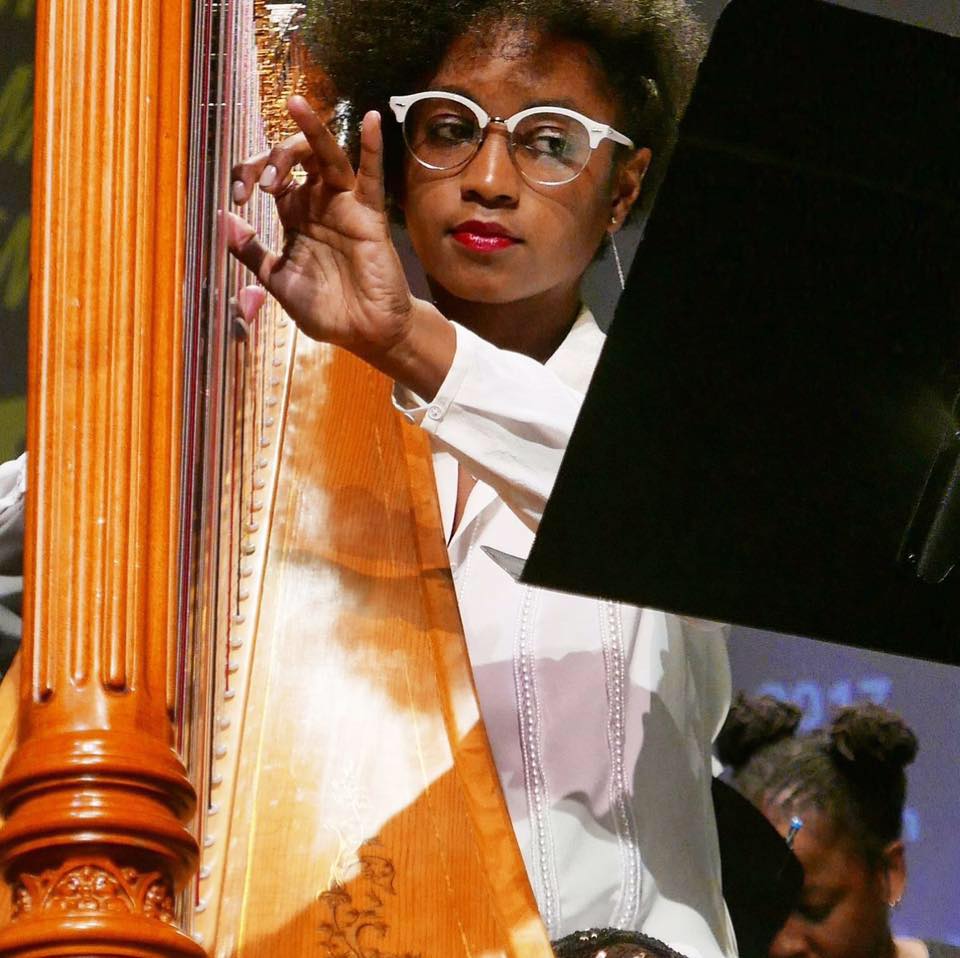By Stuart Diamond
Saturday afternoon, January 19 2019, at the Fort Washington Collegiate Church. I am there to watch the premiere of The Washington Heights Chamber Orchestra’s (WHCO) innovative bilingual version of Stravinsky’s L’histoire du Soldat (renamed La Historia del Soldado), with original choreography by Billy Smith of the Mark Morris Dance Group.
I have been with this production from its inception. I have watched the creative team led by Chris Whittaker and Billy Smith, develop a show that is fresh, original, and in my estimation and by many others who saw the performance, masterful. So much so that it made me reflect on what it is to create a masterful dance-theater production such as this.
Soldat itself is an odd step-child of the Stravinsky catalogue. Collaborating with librettist Charles-Ferdinand Ramuz, Stravinsky composed the score while he and his wife lived in exile in Switzerland during World War I. The piece was intended as a travelling cabaret act to earn money. It is a mix of narration, movement, and music. It also contains some of Stravinsky’s most innovative early music, exploring a mix of classical, jazz, and other popular styles, at least as he imagined it.
The storyline is distilled from Russian folktales. It is a parable of a Soldier, the Devil, and a Princess – their trials, triumphs, and tribulations. The story has a dark Slavic ethos – in contrast to our American positive self-help philosophies that insist we should have it all. Today, Soldat has become a staple of the repertoire, and is presented in a variety of formats – music-theater, dance, or as concert music, with or without narration.
Chris Whittaker pulled off his typical hat trick of juggling multiple roles simultaneously. The core concept was his – a bilingual (Spanish-English) version of the work that would reflect the linguistic reality of the streets of Washington Heights. He commissioned the translation and then weaved the two settings into a single narrative. Finally, he pulled together all the creative players and forged it into a stellar production.
The music is tricky - with complex rhythmic patterns, changing in and out of odd meters. Whittaker, with his precise, authoritative, and muscular conducting style, proved his reputation as one of the most promising, emerging young conductors in the New York music scene. The musicians keyed into him, laying down a foundational bedrock - absolutely necessary for the success of a complex dance-theater performance.
The new bilingual translation, as performed by Ursula Tinoco and Luis Ponce, worked remarkably well. At least for those of us who live in polyglot worlds. When you let go of trying to understand every word, somehow we get the gist – just as we do on the streets in the Heights.
Next question: What is masterful choreography?
My premise is that dance is the interweaving of sound and visuals – usually music and the human form. As a composer, who has worked with dancers and choreographers, I am biased to the position that the music is the emotional bedrock of any dance work. Music controls the innate and subliminal impact of feeling. Choreographers have choices. They can work with the sound palette or against it. But the music cannot be ignored. Even silence is its own form of music that must be considered.
The choreographer also chooses whether they are simply telling a story or constructing a purely abstract dance based on movement alone. Or something in between.
We might understand what makes masterful choreography by understanding how it reflects music composition. Music compositions are often built on identifiable motifs, small cells of a few notes. Think of the opening of Beethoven’s Fifth: “Ta-ta-ta- duummm…”
Parallel to music, a choreographer may create small motifs, the building blocks of the dance. These are movement-visualizations to the musical motifs heard in the aural landscape. Then it is up to the choreographer’s imagination to vary these motifs of movement, developing image upon image. Just as in music, there is a treasure trove of technical variations – unison, canon, retrograde, inversions, etc. But because all the variations use the same underlying motifs there is a sense of unity that holds our imaginations as we watch and listen. The choreographer then builds the dance, taking us on a journey that rises and falls with meaningful tensions and releases. And when it works well, it can open the doors to the sublime that can be both emotionally and intellectually satisfying.
Soldado opens with a Stravinsky march, the narrators intoning, “Down a hot and dusty road, tramps a soldier with his load.” Smith has his three dancers march up the center aisle from the back of the church. He recognizes that the center aisle is a 3-dimensional rectangle that the dancers are moving through. As they march up the aisle, each dancer uses their hands and arms to articulate the same rectangular space. Yet each dancer’s movements are unique, reflecting the character they play. The Soldier, pumping his arms up and down, has the stiff march of a military man. The Princess’s fingertips touch, as though she is praying. The Devil swaggers with a bold arrogance. Their footwork each instantly responds to the complex rhythmic patterns of Stravinsky’s music. (These are the movement motifs, the blocks, with which Smith will develop the choreography.) A deceptively simple march to our eyes and ears, yet the groundwork is being laid for what is to come.
Smith’s dance movement certainly evokes Mark Morris’s influence. However, he creates a distinctive voice by exploiting the inherent strengths of each dancer – an elite group also drawn from the Morris company. Aaron Loux’s Devil soars through the air – literally. His leaps and suspensions are uncanny. “After all,” Loux comments, “the Devil should be able to fly effortlessly.” Mica Bernas articulates the space around her. With every leg lift or flick of a finger she holds the pose for a microsecond. Her movement is an endless flow of painterly images. Her comment? “All that hard work really paid off.” And Domingo Estrada Jr. is a study in “athletic presence” – a tutorial in how sheer intensity of focus becomes magnetic. Whether simply standing still on stage or running past the audience as he runs down the aisle, it is hard to take your eyes off of him.
As the dancers move onto the stage, we watch solos, duets, and trios – at times in perfect sync and the next moment breaking into counterpoints. Each dancer is defined by their signature movements, but not limited to it. As their parts all stem from the original motifs, there is an underlying unity. As a result, the complex work looks and feels clear, as though it is pristine geometry in motion
The Soldier’s arms reach forward, palms down, searching for his fulfillment and happiness. Our Princess begins with her hands at discreet angles – as though she is praying. When she raises her arms upwards, it is as though she is beseeching Heaven. At one point, she embraces the Soldier in a movement of love and comfort, her arms now matching his. The Devil leaps and bounds, his chest puffed out, hands on hip, swaggering about in his role as Tempter.
As tale marches toward its conclusion, The Soldier seems to have prevailed. He has won the love of the Princess. Then the narrators reveal the moral of the fable: “No one can have it all. That is forbidden. You must learn to choose between. One happy thing is every happy thing. Two, is as if they had never been.”
The Devil tempts the Soldier once again with promises of even greater happiness – the reunification with his mother and family. The Soldier succumbs to the Devil’s final temptation and leaves the happiness he has found for something else. In the final duet, we watch the Soldier’s outstretched arms become entangled in the Devil’s. His searching hands are now tied behind his back. He is becoming a marionette to the Devil’s puppet mastery. And at the final moment, we are left with a vision of the Devil, arms raised in triumph – and the Soldier, his arms raised in supplication beneath him.
Yet, none of this is visually explicit. At best, it is only hinted at with passing imagery. And more so, the above description is solely my interpretation of what I saw on the stage. Billy Smith’s La Historia du Soldado is both specific and amorphous – allowing each member of the audience to provide their own perspective.
Is this the magic and mystery of masterful choreography in live performance? The interaction between dancers, music, and audience – creating hundreds of interpretations (experiences that are very personal) of the same choreography, yet all elicited from the same imagery, stories, and parables that explore the universals of love, yearning, and fulfillment.
Chris Whittaker’s and Billy Smith’s La Historia del Soldado is ample testament that the next generation of master conductors, musicians, and choreographers has arrived.
Stuart Diamond is a composer, musician, and multimedia artist. He is on the Board of the Washington Heights Chamber Orchestra.





























